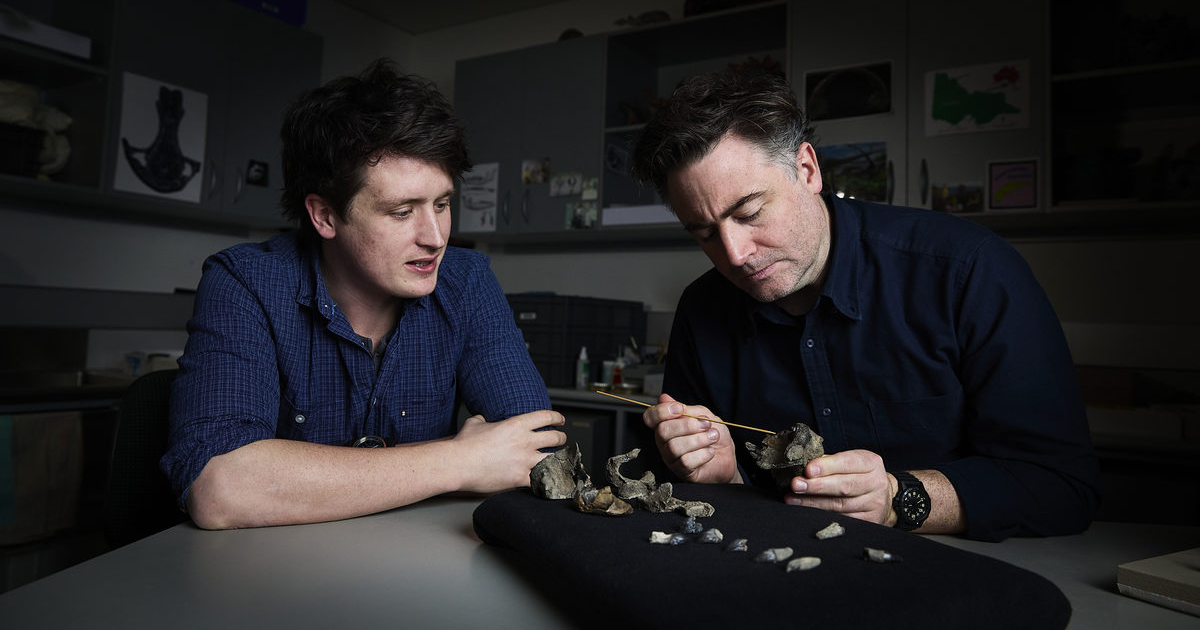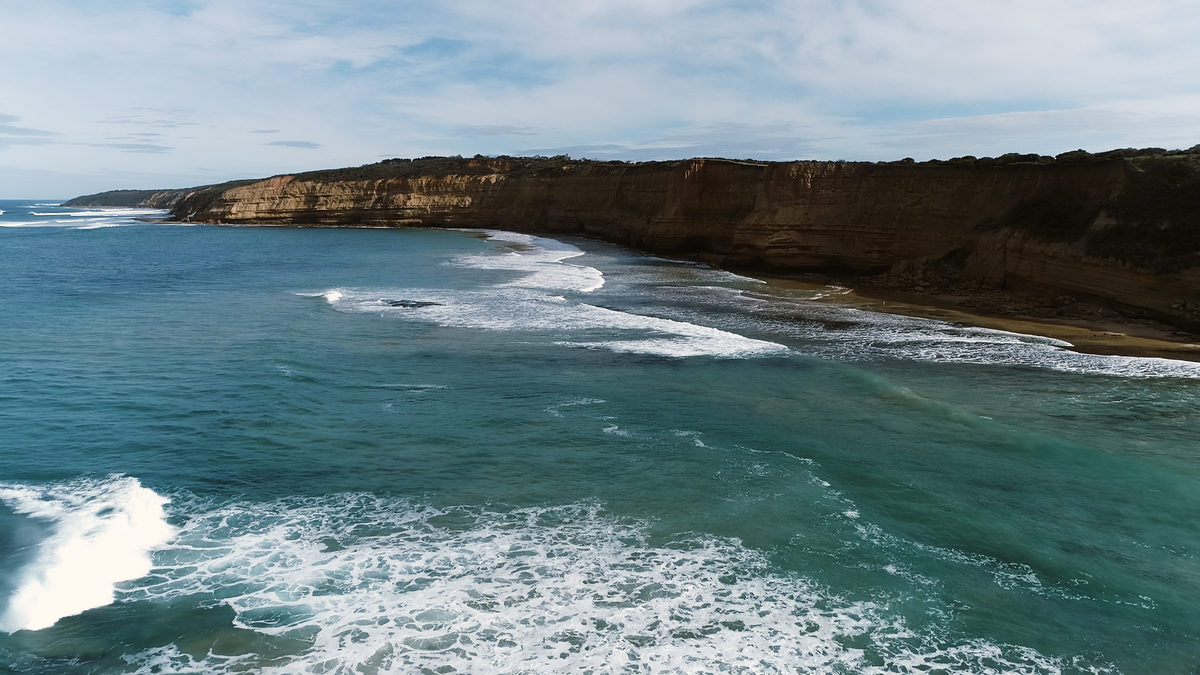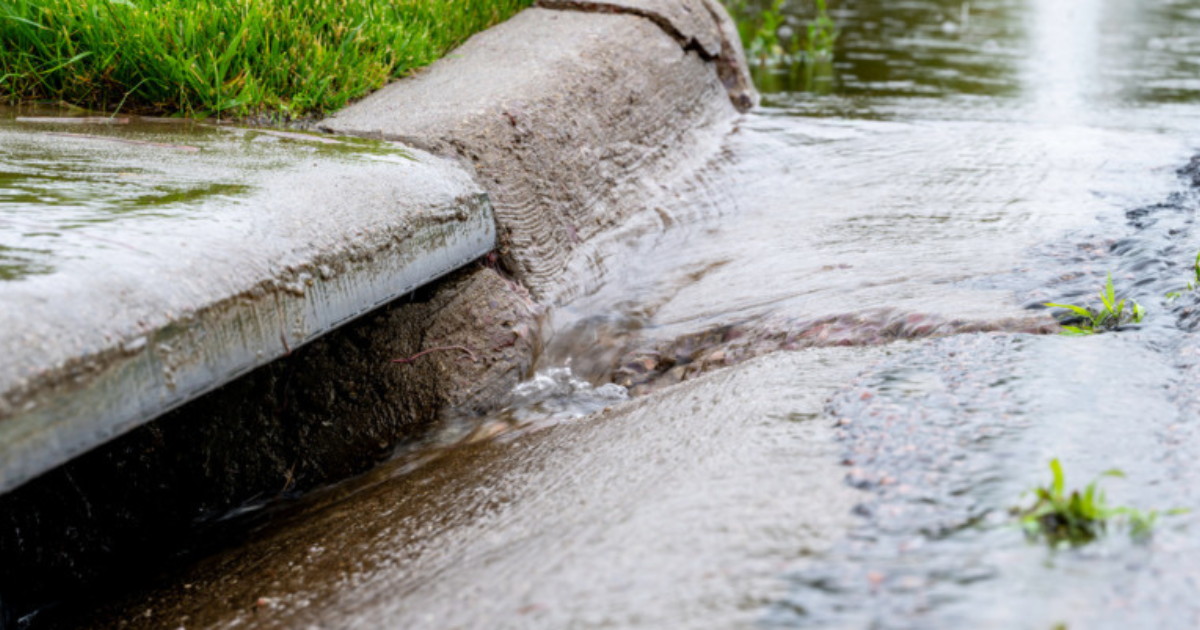Whale species unearthed at Jan Juc

Ruairidh Duncan and Dr Erich Fitzgerald with the partial fossil skull of Janjucetus dullardi. Photo: TOM BREAKWELL/MUSEUMS VICTORIA.
A FOSSIL estimated at 26 million years old found near Jan Juc belongs to a new species of whale, according to scientists at Museums Victoria’s Research Institute.
The discovery offers insight into the early evolution of baleen whales.
Janjucetus dullardi has been described as a fast, sharp-toothed predator about the size of a dolphin, with a short snout, large forward-facing eyes and slicing teeth.
The fossil, a partial skull with ear bones and teeth, was discovered by local resident Ross Dullard while walking along the beach in June 2019.
Recognising its scientific significance, Mr Dullard donated it to Museums Victoria, where researchers carefully prepared and studied the fossil.
In recognition of his contribution, the new species has been named in Mr Dullard’s honour.
“This kind of public discovery and its reporting to the museum is vital,” Dr Erich Fitzgerald, senior curator of vertebrate palaeontology at Museums Victoria Research Institute and senior author of the study, said.
“Ross’ discovery has unlocked an entire chapter of whale evolution we’ve never seen before. It’s a reminder that world-changing fossils can be found in your own backyard.”

The research, published last week in the Zoological Journal of the Linnean Society, identifies Janjucetus dullardi as a juvenile “baby whale”, just over 2m long.
Despite its small size, it belonged to a group known as mammalodontids, early whales that lived only during the Oligocene Epoch, about 30 to 23 million years ago.
“It’s essentially a little whale with big eyes and a mouth full of sharp, slicing teeth,” Museums Victoria Research Institute PhD student Ruairidh Duncan said.
“Imagine the shark-like version of a baleen whale – small and deceptively cute, but definitely not harmless.”
This is the third known mammalodontid species from Victoria, and only the fourth found worldwide. It is also the first to preserve both the teeth and inner ear structures in such detail, which are key features for understanding how early whales fed, heard, moved and behaved in the water.
The fossil was recovered from the fossil-rich Jan Juc Formation, which dates to a time of global warmth and rising seas. This coastal stretch of Victoria is becoming internationally recognised as a hotspot for early whale evolution.
Understanding how ancient whales adapted to warmer oceans millions of years ago gives scientists clues about how today’s marine life might respond to climate change.
The team expects more fossil discoveries from Victoria’s coastline in the coming years and is continuing to study newly uncovered fossils, as well as long-unstudied specimens from the region in the Museums Victoria State Collection.

















